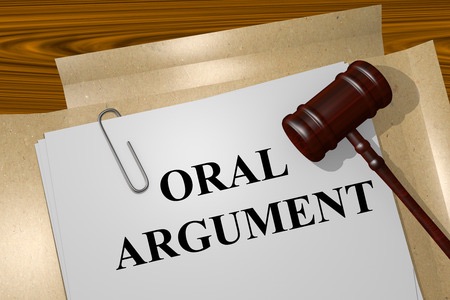“Affirming [the Second Circuit’s] ‘defense preclusion’ rule could influence litigation strategies in that it would pressure parties—especially where the parties were involved in multiple compounding litigation spanning the years— to raise and fully litigate all affirmative defenses, even those which may not be the strongest.” – Brian Michalek
 On the morning of Monday, January 13, the U.S. Supreme Court heard oral arguments in Lucky Brand Dungarees Inc. v. Marcel Fashion Group Inc. The case asks the High Court to decide “whether, when a plaintiff asserts new claims, federal preclusion principles can bar a defendant from raising defenses that were not actually litigated and resolved in any prior case between the parties.” While the case originally involved allegations of trademark infringement, oral arguments indicated that the Justices of the Supreme Court will issue a decision with far-reaching implications on the question of what constitutes a single cause of action.
On the morning of Monday, January 13, the U.S. Supreme Court heard oral arguments in Lucky Brand Dungarees Inc. v. Marcel Fashion Group Inc. The case asks the High Court to decide “whether, when a plaintiff asserts new claims, federal preclusion principles can bar a defendant from raising defenses that were not actually litigated and resolved in any prior case between the parties.” While the case originally involved allegations of trademark infringement, oral arguments indicated that the Justices of the Supreme Court will issue a decision with far-reaching implications on the question of what constitutes a single cause of action.
Lucky Brand: The Second Circuit’s Rule Will Sow Uncertainty
Arguing for petitioner Lucky Brand Dungarees was Dale Cendali, Partner at Kirkland & Ellis. Cendali began her argument by discussing Supreme Court precedent that undermines the decision entered by the U.S. Court of Appeals for the Second Circuit, including Cromwell v. County of Sac (1876), Davis v. Brown (1876) and Taylor v. Sturgell (2008). The proper interpretation of these cases, Cendali argued, led to the conclusion that a defendant is free to argue any previously unresolved defense it may have to new claims. Cendali contended that this rule is easy to administer and protects due process interests. While unresolved defenses can’t be raised in judgment enforcement actions or actions collaterally attacking a prior judgment, the present case involves new trademark claims asserted by Marcel which arose after the prior infringement case between the two parties.
Justice Ruth Bader Ginsburg questioned Cendali as to why Lucky Brand dropped its release defense, in which it argued that Marcel released Lucky Brand from post-2003 infringement charges by stipulating to a previous judgment from the first case brought by Marcel back in 2005. While Cendali was unsure why the release defense was dropped from the 2005 case, she noted that the defense wasn’t dispositive to the case and the statutory damages at issue were low enough that the cost of additional briefing may not have been worthwhile.
Justice Samuel Alito noted that the rule on preclusion from the Restatement (Second) of Judgments precludes raising a defense that could nullify an initial judgment or impair rights that judgment established. Cendali countered by noting that the defense wouldn’t upset the relief awarded to Marcel in the 2005 case but, rather, prevent the broader relief sought by Marcel in the second case. Later, Alito noted that the 2005 action had an apparent discrepancy between the infringement findings in the jury verdict and the narrow injunction entered against Lucky Brand’s use of the “Get Lucky” mark. In interpreting the impact of that discrepancy on the second action, Cendali noted that the district court in the 2005 case understood that Marcel’s claims focused on a narrower infringement issue than indicated by the jury verdict.
Cendali pointed out four major issues that stem from the preclusion test created by the Second Circuit: 1) it creates uncertainty for defendants who may be unsure whether they are required to raise certain defenses; 2) it will create more litigation because defendants will be compelled to raise additional defenses; 3) it could incentivize plaintiffs into gaming litigation by bringing smaller cases first to trigger preclusion; and 4) it creates an unfair situation where plaintiffs can raise new claims but defendants could be prohibited from bringing defenses against those new claims. As to whether Marcel’s infringement claims in the second case were new claims, Cendali contended that Marcel admitted in its arguments that its claims were new, such a finding would be consistent with other areas of intellectual property law where a new claim is created for each act of infringement, and the infringing act in the 2005 action was Lucky Brand’s use of the “Get Lucky” mark in juxtaposition with other branding, differing from the alleged infringing acts at issue in the second action.
Marcel Fashion: Second Circuit Approach Discourages Repeat Litigation
Arguing on behalf of the respondent Marcel was Michael Kimberly, Partner at McDermott Will & Emery. Kimberly attacked Lucky Brand’s argument that the second lawsuit involved new claims, portraying the second case as stemming from the same cause of action. Procedurally, the case moved up on appeal based on a motion to dismiss and Kimberly noted that, at that stage of litigation, the allegations of the complaint have to be taken as true and Marcel alleged that Lucky Brand has continued its use of marks found to be infringing in the 2005 action.
Chief Justice John Roberts opined that the biggest difficulty with Marcel’s case is that the rule promulgated by the Second Circuit is that it compels litigants to raise every conceivable defense in order to preserve them for any later cases that could possibly follow the first. Kimberly responded that such a situation would only develop in cases involving the same set of claims, to which Justice Ginsburg noted that everyone in this case agreed that Marcel was pursuing new claims not available at the time of the 2005 action, making it clear that claim preclusion wasn’t at issue in the present case. Kimberly countered that there was no claim preclusion in the case but not because the two cases involved different causes of action. If the facts giving rise to Marcel’s claims had arisen pre-judgment in the 2005 action, Kimberly said that those claims would be precluded because they share a common nucleus of operative fact.
“Well, how do [Marcel’s claims] not arise from a different nucleus of operative fact?” asked Justice Elena Kagan. “The facts of [the cause of action] are different because it’s a different time period. So, it’s a different transaction or occurrence.” Kimberly argued that “[t]he point here is that this was a continuing course of conduct.” The 2005 action covered infringement up to the time of the final judgment, which issued in 2010, while liability for infringement in the present case involves allegations beginning the day after the 2010 judgment was issued.
Justice Neil Gorsuch indicated that he was of a similar mind to Justices Kagan and Ginsburg in that Marcel’s present claims appear to involve a new cause of action. Kimberly pushed back by arguing that there were two categories of claims involved in the present case: Lucky Brand’s use of the “Get Lucky” mark; and the likelihood of confusion between “Lucky Brand” and Marcel’s “Get Lucky” mark. While the first category of claims was taken care of via the district court’s interlocutory sanctions order, the second category proceeded to trial, and the district court only entered an injunction against Lucky Brand’s use of “Get Lucky.” Kimberly argued that this set of facts was why Marcel couldn’t pursue the present action as a judgment enforcement action.
Hearkening back to his first civil procedure class in 1961, Justice Stephen Breyer discussed the basics of issue preclusion and he questioned why there didn’t seem to be any case law supporting the Second Circuit’s proposition to preclude unresolved defenses in the interests of judicial efficiency. Kimberly acknowledged that the Second Circuit’s rule could have been clearer about the similarity of the causes of action between two cases where defense preclusion would apply. Kimberly defended the Second Circuit’s decision on defense preclusion by citing to the Supreme Court’s 1868 decision in City of Beloit v. Morgan, which he said stood for the proposition that defenses can be precluded if they aren’t raised in the initial suit that settled rights that were later due to the parties.
Kimberly argued that, to understand what was at issue in the 2005 action, the proper analysis was to look at the counts of the complaints that were reduced to judgment, including counts in both Lucky Brand’s complaint and Marcel’s counter-complaint in that case. He added that the focus of all of the claims was a confusing similarity between the marks owned by Lucky Brand and Marcel. Justice Sonia Sotomayor questioned why the injunctive relief awarded only involved the “Get Lucky” mark given the larger scope of the claims at issue. “It seems almost natural to me that if the intent was to challenge and if the district court understood you to be challenging the Lucky Brand trademarks, that it would have enjoined the use of all of it,” Sotomayor said.
Justice Alito reiterated this point when he asked what rights were established by the final judgment in the 2005 action and Kimberly noted that the jury determined that 12 marks used by Lucky Brand were confusingly similar to a senior mark owned by Marcel, thus constituting infringement under a reverse confusion theory of liability. Alito asked why the injunction against the use of “Get Lucky” was so much narrower than this judgment. Kimberly said that both Lucky Brand and Marcel stipulated to the final judgment in the case where negotiations led Marcel to drop the other claims, but he added that Marcel’s decision not to pursue an injunction on those marks didn’t amount to a license allowing Lucky Brand to use them.
An interaction between Kimberly and Justice Kagan near the end of Kimberly’s argument period provides a pretty clear look at the question of law that the Supreme Court is being asked to decide in this case:
[H]ere’s where I really think we are in this case. [The] Second Circuit issues this decision,[a]nd as Justice Breyer said, we’ve never really seen anything like this because the Second Circuit said that there was defense preclusion even in the context of new claims. You admitted that yourself, that the Second Circuit wasn’t clear enough about the fact that it couldn’t be a new claim….. The Second Circuit’s ruling… goes far beyond that and applies to new claims. So now you think, well, that’s got to be wrong. We have to limit it to old claims. So…we’ll say that this is the old claim. It’s the same transaction or occurrence. But if it were the same transaction or occurrence, you couldn’t bring your second suit. Now then you say, yes, you can, because I can bring a second suit even if it is the same transaction or occurrence because I didn’t have the opportunity to bring it before… But nobody’s ever heard of that. The reason that you can bring a second suit is because this is a different transaction or occurrence. – Justice Kagan
Kimberly tried to clarify the Second Circuit’s ruling by pointing out a pair of footnotes in its decision. In one of the footnotes, the Second Circuit said that the present action and the 2005 action “surround related transactions or occurrences,” although Justice Ginsburg countered that “related” doesn’t mean “the same.” Another footnote concerned the unavailability of the present claims during the 2005 action, allowing the court to permit those claims despite their rising from the same nucleus of operative fact. “[The Second Circuit’s] rule is fair and symmetrical. It preserves judicial resources by discouraging repeat lawsuits, and it fosters reliance on final judgments,” said Kimberly.
On rebuttal, Cendali noted that Marcel’s argument didn’t support the principle that previously unresolved defenses can be precluded from cases involving new claims. In distinguishing City of Beloit, Cendali noted that the second action brought by the city was a suit in equity in an effort to escape a judgment from the first action, thus it didn’t involve a new claim such as in the present case. Justice Sotomayor asked Cendali why, assuming that Marcel was correct in arguing that this new action involved claims that Lucky Brand was continuing its same infringement activities, its defense based on the settlement agreement wasn’t precluded after it had the opportunity to raise the settlement agreement as a defense in the earlier action. Cendali responded by noting that Marcel brought the present case seeking subsequent relief for subsequent infringement, and thus Lucky Brand was allowed to bring a new defense against a claim for a different period of time.
Industry Insiders React
Here are some views on the oral argument from experts who are following the case.
 Brian Michalek, Partner at Saul Ewing Arnstein & Lehr – “Based on the questioning, it’s likely that the Supreme Court will reverse, as the Justices focused the respondent on many of the pressing legal issues. In particular, the Justices questioned whether such a rule of “defense preclusion” promulgated by the 2nd Circuit would create uncertainty and pressure litigants to press all defenses it may have for fear of waiving them. Additionally, the Justices challenged the symmetry of such a rule that would allow the plaintiff to bring new claims but the defendant to be blocked.
Brian Michalek, Partner at Saul Ewing Arnstein & Lehr – “Based on the questioning, it’s likely that the Supreme Court will reverse, as the Justices focused the respondent on many of the pressing legal issues. In particular, the Justices questioned whether such a rule of “defense preclusion” promulgated by the 2nd Circuit would create uncertainty and pressure litigants to press all defenses it may have for fear of waiving them. Additionally, the Justices challenged the symmetry of such a rule that would allow the plaintiff to bring new claims but the defendant to be blocked.
“The real issue flows from the fact that the three litigations between Lucky and Marcel involve convoluted and mixed facts. And affirming such a ‘defense preclusion’ rule may speak to the mixed facts of this case but would likely set a rule whose ancillary effects would cascade to other areas of federal litigation which might not have the same applicability. Such a rule could also influence litigation strategies in that it would pressure parties—especially where the parties were involved in multiple compounding litigation spanning the years— to raise and fully litigate all affirmative defenses even those which may not be the strongest.”
 Delphine Knight Brown, Partner at Axinn – “If the Court affirms the Second Circuit’s ‘defense preclusion’ rule, defendants in civil lawsuits will need to reevaluate their litigation strategies. Defendants will have to balance the cost of asserting and litigating all possible defenses to final judgment against the possibility that they may be barred in future litigations from asserting a defense that they previously elected not to assert. Equitable application of the defense preclusion test hinges on careful analysis of whether efficiency concerns outweigh unfairness to a defendant whose defense would be precluded. This is particularly true in serial litigations where facts affecting the strength of defenses change, such as in trademark infringement actions that require analysis of factors like the scope of the trademark rights and likelihood of confusion.
Delphine Knight Brown, Partner at Axinn – “If the Court affirms the Second Circuit’s ‘defense preclusion’ rule, defendants in civil lawsuits will need to reevaluate their litigation strategies. Defendants will have to balance the cost of asserting and litigating all possible defenses to final judgment against the possibility that they may be barred in future litigations from asserting a defense that they previously elected not to assert. Equitable application of the defense preclusion test hinges on careful analysis of whether efficiency concerns outweigh unfairness to a defendant whose defense would be precluded. This is particularly true in serial litigations where facts affecting the strength of defenses change, such as in trademark infringement actions that require analysis of factors like the scope of the trademark rights and likelihood of confusion.
“A decision affirming the Second Circuit could also have several practical implications, such as encouraging forum shopping by plaintiffs who want to limit their opponent’s possible defenses, deterring defendants from narrowing their defenses and streamlining cases to conserve judicial resources.”
 Danielle Johnson, Associate at Goldberg Kohn – “Lucky Brand has a more straightforward argument that’s easier to follow and that could be why the Supreme Court Justices seemed to be more sympathetic to that argument. On the other side, Marcel is making a pretty novel argument that even though the facts are the same, claim preclusion doesn’t apply but defense preclusion does. Marcel tried to make it seem like its claims were a mirror image to those in the earlier case, but their argument also thwarts that mirror image because claim preclusion can’t apply or else its case wouldn’t be litigated.
Danielle Johnson, Associate at Goldberg Kohn – “Lucky Brand has a more straightforward argument that’s easier to follow and that could be why the Supreme Court Justices seemed to be more sympathetic to that argument. On the other side, Marcel is making a pretty novel argument that even though the facts are the same, claim preclusion doesn’t apply but defense preclusion does. Marcel tried to make it seem like its claims were a mirror image to those in the earlier case, but their argument also thwarts that mirror image because claim preclusion can’t apply or else its case wouldn’t be litigated.
“I don’t see this case as having any special implication for intellectual property cases. It seems like a civil procedure issue that happens to be couched within the facts of trademark infringement. Within the trademark context, this is a pattern that comes up more where the court enters a judgment and then the same infringing behavior repeats itself and that’s where Marcel was trying to liken its case to City of Beloit. The one unique trademark angle is that this fact pattern comes up more in this context than in others.”
 Laura Ganoza, Partner at Foley & Lardner – “The Justices of the Supreme Court really drilled down during oral arguments to try to understand if the subsequent lawsuit involved the same claims as before or if in fact they were new claims. I think that whether they uphold the Second Circuit’s articulation of the rule on defense preclusion will depend on whether the subsequent lawsuit involved new claims or the same claims as before. It seemed to me that the Justices were loath to affirm what they thought was an outlier decision of the Second Circuit if these really are new claims.
Laura Ganoza, Partner at Foley & Lardner – “The Justices of the Supreme Court really drilled down during oral arguments to try to understand if the subsequent lawsuit involved the same claims as before or if in fact they were new claims. I think that whether they uphold the Second Circuit’s articulation of the rule on defense preclusion will depend on whether the subsequent lawsuit involved new claims or the same claims as before. It seemed to me that the Justices were loath to affirm what they thought was an outlier decision of the Second Circuit if these really are new claims.
“Trademark law is definitely at the center of this case and the Justices were very focused on wanting to understand what the trademarks at issue were in these cases. Ultimately, I think that the decision in Lucky Brand Dungarees will have broader implications in general. One of the reasons why the decision may be more particular to trademarks is that, in such cases, you may have more instances of the same parties being sued on similar issues that involve similar trademarks. This may happen more in an intellectual property context than in commercial cases where new claims between the same parties could arise from completely different contracts.”
Image Source: Deposit Photos
Copyright: Premium_shots
Image ID: 94792232

![[IPWatchdog Logo]](https://ipwatchdog.com/wp-content/themes/IPWatchdog%20-%202023/assets/images/temp/logo-small@2x.png)

![[[Advertisement]]](https://ipwatchdog.com/wp-content/uploads/2023/01/2021-Patent-Practice-on-Demand-1.png)
![[Advertisement]](https://ipwatchdog.com/wp-content/uploads/2024/04/Patent-Litigation-Masters-2024-sidebar-700x500-1.jpg)

![[Advertisement]](https://ipwatchdog.com/wp-content/uploads/2021/12/WEBINAR-336-x-280-px.png)
![[Advertisement]](https://ipwatchdog.com/wp-content/uploads/2021/12/2021-Patent-Practice-on-Demand-recorded-Feb-2021-336-x-280.jpg)
![[Advertisement]](https://ipwatchdog.com/wp-content/uploads/2021/12/Ad-4-The-Invent-Patent-System™.png)






Join the Discussion
No comments yet.